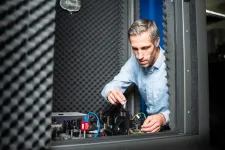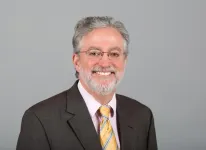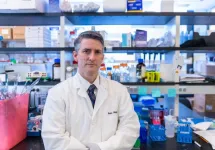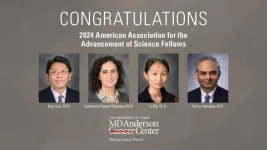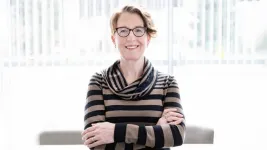(Press-News.org) Findings of substantial variability in pathology AI models’ performance based on race, insurance type and age group serve as a “call to action” to researchers and regulators to improve medical equity
Large foundation models that incorporate a richer level of detail may mitigate disparities between different demographic groups and enhance model accuracy.
Advanced artificial intelligence (AI) systems have shown promise in revolutionalizing the field of pathology through transforming the detection, diagnosis, and treatment of disease; however, the underrepresentation of certain patient populations in pathology datasets used to develop AI models may limit the overall quality of their performance and widen health disparities. A new study led by investigators from Mass General Brigham highlights that standard computational pathology systems perform differently depending on the demographic profiles associated with histology images, but that larger “foundation models” can help partly mitigate these disparities. Findings, published April 19th in Nature Medicine, emphasize the need for more diverse training datasets and demographic-stratified evaluations of AI systems to ensure all patient groups benefit equitably from their use.
“There has not been a comprehensive analysis of the performance of AI algorithms in pathology stratified across diverse patient demographics on independent test data,” said corresponding author Faisal Mahmood, PhD, of the Division of Computational Pathology in the Department of Pathology at Mass General Brigham. “This study, based on both publicly available datasets that are extensively used for AI research in pathology and internal Mass General Brigham cohorts, reveals marked performance differences for patients from different races, insurance types, and age groups. We showed that advanced deep learning models trained in a self-supervised manner known as ‘foundation models’ can reduce these differences in performance and enhance accuracy.”
Based on data from the widely used Cancer Genome Atlas and EBRAINS brain tumor atlas, which predominantly include data from white patients, the researchers developed computational pathology models for breast cancer subtyping, lung cancer subtyping, and glioma IDH1 mutation prediction (an important factor in therapeutic response). When the researchers tested the accuracy of these models using histology slides from over 4,300 patients with cancer at Mass General Brigham and the Cancer Genome Atlas, and stratified the results by race, they found that the models performed more accurately in white patients than Black patients. The models the team tested for subtyping breast and lung cancers and predicting IDH1 mutation in glioma found respective disparities of 3.7, 10.9, and 16 percent in producing correct classifications.
The researchers sought to reduce the observed disparities with standard machine learning methods for bias-mitigation, such as emphasizing examples from underrepresented groups during model training; however, these methods only marginally decreased the bias. Instead, disparities were reduced by using self-supervised foundation models, which are an emerging form of advanced AI trained on large datasets to perform a wide range of clinical tasks. These models encode richer representations of histology images that may reduce the likelihood of model bias.
Despite the observed improvements, gaps in performance were still evident, which reflects the need for further refinement of foundation models in pathology. Furthermore, the study was limited by small numbers of patients from some demographic groups. The researchers are pursuing ongoing investigations of how multi-modality foundation models, which incorporate multiple forms of data, such as genomics or electronic health records, may improve these models.
The emergence of AI tools in medicine has the potential to positively reshape the delivery of care. It is imperative to balance the innovative potential of AI with a commitment to quality and safety. Mass General Brigham is leading the way in responsible AI, conducting rigorous research on new and emerging technologies to inform the incorporation of AI in medicine.
“Overall, the findings from this study represent a call to action for developing more equitable AI models in medicine,” Mahmood said. “It is a call to action for scientists to use more diverse datasets in research, but also a call for regulatory and policy agencies to include demographic-stratified evaluations of these models in their assessment guidelines before approving and deploying them, to ensure that AI systems benefit all patient groups equitably.”
Authorship: Mass General Brigham authors include co-first authors Anurag Vaidya, Richard Chen, and Drew Williamson, as well as Andrew Song, Guillame Jaume, Ming Lu, Jana Lipkova, Muhammad Shaban, and Tiffany Chen (MGB Department of Pathology).
Disclosures: None.
Funding: This work was supported in part by the Brigham and Women’s Hospital (BWH) President’s Fund, BWH and Massachusetts General Hospital Pathology, and National Institute of General Medical Sciences (R35GM138216) to Mahmood.
Paper cited: Vaidya, A et al. “Demographic bias in misdiagnosis by computational pathology models” Nature Medicine DOI: 10.1038/s41591-024-02885-z
###
About Mass General Brigham
Mass General Brigham is an integrated academic health care system, uniting great minds to solve the hardest problems in medicine for our communities and the world. Mass General Brigham connects a full continuum of care across a system of academic medical centers, community and specialty hospitals, a health insurance plan, physician networks, community health centers, home care, and long-term care services. Mass General Brigham is a nonprofit organization committed to patient care, research, teaching, and service to the community. In addition, Mass General Brigham is one of the nation’s leading biomedical research organizations with several Harvard Medical School teaching hospitals. For more information, please visit massgeneralbrigham.org.
END
Making ever smaller and more powerful chips requires new ultrathin materials: 2D materials that are only 1 atom thick, or even just a couple of atoms. Think about graphene or ultra-thin silicon membrane for instance. Scientists at TU Delft have taken an important step in application of these materials: they can now measure important thermal properties of ultrathin silicon membranes. A major advantage of their method is that no physical contact needs to be made with the membrane, so pristine properties can ...
A new study published in the scientific journal Addiction has found that people who are maltreated as children may be three times more likely to be admitted to hospital for alcohol and substance use disorders by the age of 40, compared with those who are not maltreated.
The study used data from over 6,000 children born at the Mater Mothers Hospital, Brisbane, Australia between 1981 and 1983. Ten percent of those children (609 children) had at least one child maltreatment notification (reported or substantiated) up to 15 years of age. Compared with the rest of the children, those 609 ...
University of Utah Health professors Amy Barrios, PhD, and H. Joseph Yost, PhD, have been elected as Fellows of the American Association for the Advancement of Science (AAAS), a lifetime honor that celebrates their excellence in research and commitment to mentoring the next generation of scientists.
Yost and Barrios join a distinguished cadre of AAAS Fellows at the U, including Nancy Songer, PhD; Thure Cerling, PhD; Vahe Bandarian, PhD; Eric W. Schmidt, PhD; Jennifer S. Shumaker-Parry, PhD; and Mario Capecchi, PhD.
Rachel Hess, MD, associate vice president for research at U of U Health, says, ...
Boston - Kevin Haigis, PhD, Chief Scientific Officer, Dana-Farber Cancer Institute, has been named Fellow of the American Association for the Advancement of Science (AAAS). Election as an AAAS Fellow is a distinguished lifetime honor bestowed upon AAAS members by their peers.
Haigis is recognized within Biological Sciences for his distinguished contributions to understanding the complex diversity of cellular dysregulation by different variants of RAS mutations and their consequences in pathophysiology and ...
Two siblings who have the only known mutations in a key gene anywhere in the world have helped scientists gain new insights that could help progress the search for new treatments in type 1 diabetes.
Type 1 diabetes (also known as autoimmune diabetes) is a devastating and life-long disease, in which the patient’s immune cells wrongly destroy the insulin producing beta cells in the pancreas. People living with autoimmune diabetes need to test their blood sugar and inject insulin throughout their lives to control their blood sugars and prevent complications.
Autoimmune ...
HOUSTON ― In recognition of their significant achievements in the realm of cancer care and research, four researchers at The University of Texas MD Anderson Cancer Center have been elected fellows of the American Association for the Advancement of Science (AAAS). This prestigious distinction stands as one of the highest accolades within the scientific research community.
Boyi Gan, Ph.D., Candelaria Gomez-Manzano, M.D., Li Ma, Ph.D., and Sattva Neelapu, M.D., now join this esteemed group of fellows elected by their peers. AAAS’s annual tradition of recognizing leading scientists as fellows dates to 1874. With these newest additions, 68 MD Anderson faculty members ...
SAN FRANCISCO—April 18, 2024—The American Association for the Advancement of Science (AAAS), one of the world’s largest general scientific societies, has elected Gladstone Senior Investigator Katie Pollard, PhD, into its new class of AAAS Fellows, a lifetime honor within the scientific community.
AAAS recognized Pollard for her “distinguished contributions to the field of computational biology and bioinformatics, particularly her discovery of Human Accelerated Regions, and development of ...
April 18, 2024, TORONTO – A new round of clinical trials supported by the Ontario Institute for Cancer Research (OICR) will harness a unique opportunity to test some of the newest treatment strategies for a range of different cancers.
OICR has announced two new clinical trials as part of its Window-of-Opportunity (WOO) Network, which brings together Ontario researchers, clinicians and patients to study the biology of newly diagnosed and recurrent tumours.
“‘Window-of-opportunity’ clinical trials take advantage of the two-to-eight-week period between the diagnosis of cancer and the surgery to remove the cancer, at ...
Over the next 25 years, as the world shifts away from fossil fuels, the oil and gas wells that have sustained the fossil fuel age will have to be plugged.
No big deal, you might think, drilling those wells was the hard part. Plugging them should be no problem. But think again.
The Norwegian Continental Shelf, as an example, is punctured by more than 2000 wells. Harald Linga, centre director for SWIPA (see box), a Centre for Research Based Innovation based at SINTEF, Scandinavia’s largest independent research institute, estimates that plugging them using today’s technology will cost upwards of NOK 800 billion – that’s USD 73 billion.
And while oil ...
Sulfur and chlorine isotopes in the atmosphere of Jupiter’s moon Io indicate that it has been volcanically active for the entire 4.57 billion-year history of the Solar System, according to a new study. The findings offer new insights into the moon’s history. Io is the most volcanically active body in the Solar System. This extreme level of volcanic activity is the result of tidal heating from friction generated within the moon’s interior as it is pulled between Jupiter and its neighboring moons of Europa and Ganymede. However, how long Io has hosted such extensive ...
